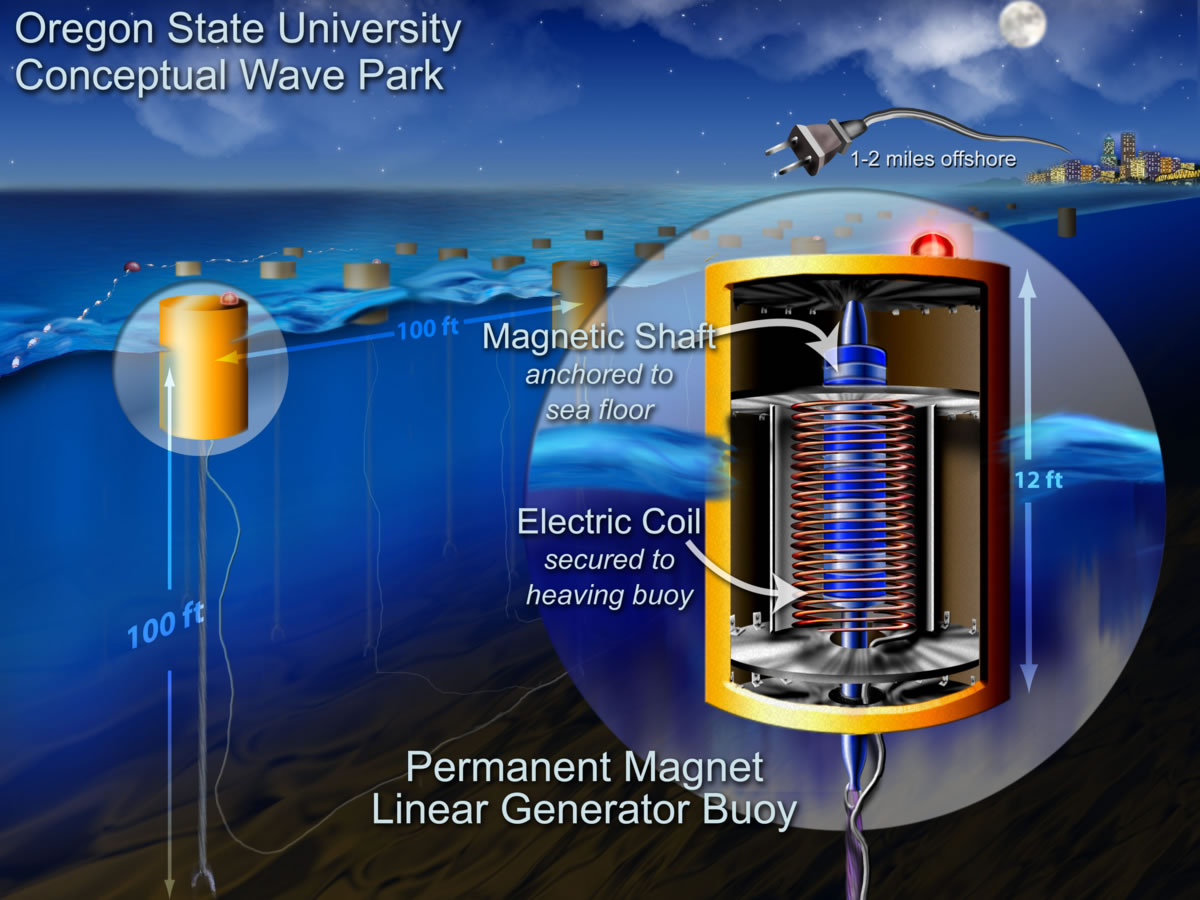PHOTOVOLTAIC PANELS
Renewable Energy from Alternative Sources
SOLAR PANELS
For a Better Future

Alternative energy and renewable energy: Producing energy with the waves and tidesThe tide is rising rhythm (flow) and fall (reflux) of sea level caused by the action of gravity of the Moon and the Sun
Energy from tides The cyclical phenomenon of the tides is characterized by periodic oscillations of sea level with alternating flow, high tide, and ebb, low tide. The attraction of heavenly bodies exert on the Earth and the centrifugal force due to the rotational motion of the Earth-Moon system, are the most significant factors that determine the periodic oscillation of the water. In favorable conditions (what happens in a few places) at high tide can exceed 5 m. In open water is usually less than 1 m in the Mediterranean, in particular, the tides have an average gradient of 30 cm. The kinetic energy of the water masses of tidal friction is transformed into internal energy of water. This energy, continuously subtracted from the friction of the tides, is provided by the slowing of the Earth's rotation on itself. The length of day increases by 20 microseconds per year and the moon's orbit around the Earth expands to 3 cm per year. Based on these data one can calculate that the power dissipated by the tides, and 'the order of 10 ^ 12 W, is equal to that consumed in the world. Only a small fraction of this energy can be exploited in a limited number of locations where the amplitude of the tide is high enough to allow the cost-effectiveness.
|
|
Energy from ocean currents and tidalpower of tidal currents is one of the most interesting and unexplored sources of renewable energy sources. Consider that in Europe alone, the availability of this type of energy is equal to about 75 gigawatts. The strong currents that pass through the Strait of Messina have a potential energy equal to that provided by the largest hydroelectric power station under construction on the Yangtze River in China: about 15,000 megawatts. The turbines for the exploitation of marine currents can be (as for wind technologies), horizontal axis or vertical axis. The horizontal axis turbines are better suited to constant currents, such as those found in the Mediterranean, the vertical axis turbines are more suited to tidal currents for the fact that they change the direction of about 180 ° several times throughout the day. It is worth noting that the energy of tidal currents is non-barrier, in contrast to that obtained using the rise and fall of the tides as the center of La Rance in France, which still produces 240 MW of about 35 years . The technical description of a particular turbine for the exploitation of tidal currents, can be adapted as a wind turbine which has better efficiency at low speed wind turbine chiral. The horizontal axis turbines are installed in the center of Hammerfest in Norway to England and Lynmouth, the costs of these experimental plants are already at a good level (4 cents / kWh) is estimated to reach even more cost competitive for multiple plants. With only 1 square meter of area intercepted in a stream of water traveling at 3 meters per second (11 km / h) can produce about 3 kW. A current of air which intercepts 1 square meter of area, to produce the same 3 kW, must travel at 28 m / s (101 km / h). In April 2006 Italy was linked to the national grid electricity generator Enel the first in the world that uses the ocean currents. The power generated is small, only 40 Kwatt (13 homes at full load) but must take into account that it is a technology with broad margin at the prototype stage of development. As early as the next evolutionary step should reach 150 Kwatt (over 300% more). On the roof, since it does not throw anything away, photovoltaic panels were installed. The Kobold turbine, which looks like a floating platform about 10 feet in diameter, with a vertical axis turbine with three large blades immersed in water, was born from the idea of Elio Matacena backwards to exploit modern engine mounted on the ship Charon ferries. Post for nearly two years off Ganzirri (north of Messina) where the currents have average speeds of 2 meters per second, Kobold has demonstrated the feasibility of converting mechanical energy into electricity. The Ponte di Archimede SpA, or the company that has developed and implemented, has already found an important customer willing to buy large numbers: Indonesia. The Indonesian territory is composed of very small size of many islands on which it is almost impossible to carry or produce energy, so much so that most are still without electricity. The Indonesian government plans to install the Kobold (the name of the turbines) between these islands to take advantage of the strong currents that surround them in order to provide power to the many villages and towns that are still lacking. The university "University of Wales Swansea" and partners (www.swanturbines.co.uk) are designing turbines to produce electricity from sea water current. The turbines "Swanturbines" are specific for a number of aspects.The first difference is the direct coupling of the blades to the generator without the intermediary of a gearbox. This configuration is more efficient and eliminates a potential point of failure. Another feature is the use of "gravity base", a heavy block of concrete to keep the turbine instead of standing by drilling the seabed. (source: http://www.bcp-energia.it/fonti_energia_rinnovabili/ energia_maree_e_moto_ondoso.php)
|

